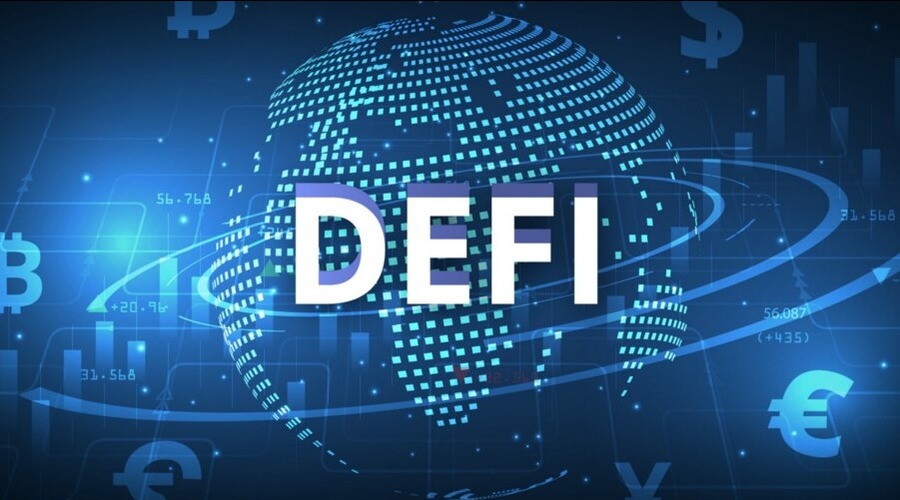Cryptocurrencies have revolutionized the financial landscape, offering alternative methods of earning and investing. One such method is staking, which allows individuals to participate in blockchain networks and earn rewards for their contribution. In this article, we will delve into the world of staking rewards and incentives, exploring how they work and the benefits they offer.
What is Staking?
Staking refers to the process of actively participating in the validation of transactions on a blockchain network. Unlike traditional Proof of Work (PoW) consensus mechanisms, where miners compete to solve complex mathematical puzzles, staking utilizes a Proof of Stake (PoS) model. In PoS, participants are selected to create new blocks and validate transactions based on the number of tokens they hold and “stake” in the network.
How Does Staking Work?
Staking operates through a network of validators and delegators. Validators are responsible for verifying transactions and proposing new blocks, while delegators contribute their tokens to validators to increase their chances of being selected for block creation. In return, both validators and delegators receive staking rewards.
Staking Rewards and Incentives
One of the primary attractions of staking is the ability to earn passive income. Staking rewards can come from various sources, including block rewards and transaction fees. Block rewards are newly minted tokens that are distributed to validators and delegators as an incentive for their participation. Transaction fees, on the other hand, are fees paid by users to have their transactions processed on the network.
The amount of rewards earned through staking depends on factors such as the network’s consensus mechanism, token supply and circulation, and staking duration. Different networks may have varying reward structures, so it’s essential to understand the specifics of each network before staking.
Factors Influencing Staking Rewards
Certainly! Here are the factors that can influence staking rewards:
- Network Consensus Mechanism: The consensus mechanism employed by a blockchain network plays a significant role in determining staking rewards. Different networks may use variations of Proof of Stake (PoS), such as Delegated Proof of Stake (DPoS) or Tendermint-based consensus. Each mechanism has its own rules and reward structures, which can impact the amount of rewards participants can earn.
- Token Supply and Circulation: The total supply of tokens and their circulation within a network can affect staking rewards. If a network has a limited supply of tokens and a significant portion of them are staked, the competition for rewards may be higher, potentially leading to higher rewards for stakers. Conversely, if a large percentage of tokens are already staked, the rewards may be lower due to increased staking competition.
- Staking Duration: The duration for which tokens are staked can also influence rewards. Some networks offer higher rewards for longer lockup periods, incentivizing participants to stake their tokens for extended periods. Longer lockup periods may provide increased rewards as a way to encourage participants to commit their tokens and contribute to network security and stability.
- Network Participation: The overall level of participation in staking within a network can impact rewards. Higher participation often leads to increased competition for rewards. Networks with low participation may offer higher rewards to attract more stakers and increase the security and decentralization of the network. Conversely, networks with high participation may have lower rewards due to the saturation of stakers.
- Network Fees: The fees associated with staking can affect overall rewards. Networks may charge fees for staking or transaction processing, which are deducted from the rewards earned. Higher fees can reduce the net rewards received by participants. It’s important to consider the fee structure and compare it with potential rewards to ensure it aligns with your staking goals.
Popular Staking Platforms
Several blockchain networks support staking, each with its unique features and rewards. Ethereum 2.0, the long-anticipated upgrade to the Ethereum network, implements staking as part of its consensus mechanism. Cardano and Polkadot are also popular platforms that offer staking opportunities, with their respective networks providing attractive rewards.
Risks and Considerations
While staking can be a lucrative endeavor, it’s essential to be aware of the risks involved. One significant risk is slashing, where validators can lose a portion of their staked tokens if they act maliciously or negligently. Network security is also a concern, as attacks on the network can lead to loss of funds.
Moreover, staking often involves lockup periods during which tokens cannot be readily accessed or sold. This lack of liquidity can be a consideration for individuals who may require immediate access to their funds. Additionally, the crypto market’s volatility can impact the value of staked tokens.
Tips for Maximizing Staking Rewards
Certainly! Here are some tips for maximizing staking rewards:
- Choose Reliable Validators: Selecting trustworthy validators is crucial for maximizing staking rewards. Validators with a good track record and high uptime will increase your chances of earning rewards consistently. Research validators’ reputation, performance, and community trust before delegating your tokens.
- Diversify Staking Portfolios: Consider diversifying your staking portfolios across different networks and validators. By spreading your staked tokens, you reduce the risk of relying on a single validator or network. Diversification helps mitigate risks and optimize rewards by participating in multiple staking opportunities.
- Stay Informed: Stay updated about the latest developments in the networks you are staking on. Network upgrades, reward structure changes, and market trends can significantly impact staking rewards. By staying informed, you can make informed decisions and adapt your staking strategies accordingly.
- Monitor Reward Structures: Keep an eye on the reward structures offered by different networks. Some networks may adjust their rewards based on factors such as token supply, network participation, or consensus mechanism changes. Understanding these dynamics allows you to choose networks that offer favorable rewards.
- Reinvest Rewards: Consider reinvesting your staking rewards to compound your earnings. Instead of immediately withdrawing your rewards, reinvesting them can increase your staked token balance over time. Compounding rewards can accelerate your earnings and contribute to long-term staking success.
- Monitor Network Health: Stay vigilant about the overall health and security of the networks you stake on. Regularly check network updates, security audits, and community discussions to ensure the network remains robust and secure. A healthy network enhances the stability and reliability of staking rewards.
Staking Incentives in DeFi

Certainly! Here are some common staking incentives in the world of Decentralized Finance (DeFi):
- Liquidity Mining: Liquidity mining involves providing liquidity to decentralized exchanges (DEXs) or liquidity pools. In return, participants receive rewards in the form of additional tokens. These rewards serve as an incentive to contribute to the liquidity and trading volume of the platform. Liquidity mining allows individuals to earn passive income while supporting the liquidity needs of DeFi protocols.
- Yield Farming: Yield farming is a strategy where users leverage different DeFi protocols to maximize their returns. Participants lock their tokens in smart contracts and use them as collateral to borrow other tokens. They then supply these borrowed tokens to liquidity pools or lending protocols to earn additional rewards. Yield farming enables individuals to optimize their capital and generate higher yields by participating in multiple protocols simultaneously.
- Governance Tokens: Many DeFi protocols issue governance tokens that grant holders voting rights and decision-making power within the ecosystem. These tokens are often distributed as rewards to stakers. By staking tokens, individuals not only earn staking rewards but also gain the ability to actively participate in shaping the future of the protocol through governance activities, such as voting on proposals or protocol upgrades.
- Staking Pools: Some DeFi platforms offer staking pools where users can deposit their tokens to participate in various activities, such as lending, borrowing, or providing liquidity. These pools allow users to pool their resources together, increasing their chances of earning rewards and mitigating risks. Staking pools provide a convenient way for individuals to engage in different DeFi strategies and access a broader range of opportunities.
- Incentive Programs: DeFi projects often introduce incentive programs to encourage users to try out their protocols or specific features. These programs may offer additional rewards, bonuses, or token distributions for early adopters or active participants. Incentive programs aim to attract users, bootstrap liquidity, and drive adoption by providing extra incentives beyond regular staking rewards.
Conclusion
Staking rewards and incentives provide an exciting opportunity for individuals to earn passive income and participate in the growth of blockchain networks. By staking their tokens, individuals can contribute to network security and decentralization while being rewarded for their participation. However, it’s crucial to understand the risks, choose reliable validators, and stay informed to maximize rewards and make informed decisions.
FAQs
Can anyone participate in staking?
Yes, in most cases, anyone who holds the required tokens can participate in staking and earn rewards.
Is staking safe?
Staking involves risks, such as slashing and market volatility. However, by choosing reliable validators and staying informed, individuals can mitigate these risks.
What happens if I unstake my tokens?
When you unstake your tokens, there is usually a lockup period during which you cannot access or sell them. Once the lockup period is over, you can freely use or trade your tokens.
Are staking rewards taxable?
Taxation of staking rewards varies depending on the jurisdiction. It’s advisable to consult with a tax professional to understand the tax implications in your specific situation.
How much can I earn from staking?
The amount you can earn from staking depends on various factors, including the network’s reward structure, token supply, and staking duration. It’s important to research and understand each network’s specifics.
